Province of Calca
Calca is one of the thirteen provinces of the department of Cusco. It is located north of the city of Cusco. It is made up of eight districts: Coya, Lamay, Lares, Pisac, Lamay, San Salvador, Taray, Yanatile and Calca. The latter is the capital of the province. Its main tourist attractions are the Inca sites of Pisac and Huchuy Qosqo. It also stands out for the thermal baths of Lares from where a hiking route to Machu Picchu is made. Learn more about this Cusco province.
All about the province of Calca
Explore Calca
Calca is one of the most touristic provinces in the Cusco region. It stands out for tourist attractions such as the archaeological sites of Pisac and Huchuy Qosqo. Get to know these and other tourist destinations!
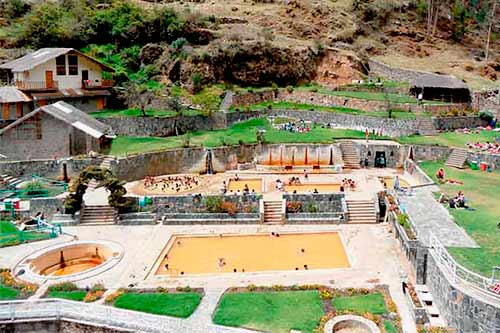
1 Lares thermal baths
The thermal baths of Lares have medicinal properties against rheumatic diseases and muscle pain. Includes lodging and camping option.
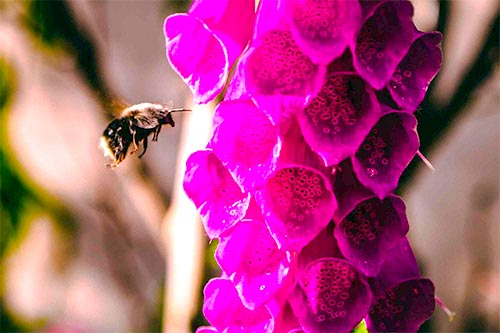
2 Botanical Garden of Pisac
The garden is located in the town of Pisac, in the Sacred Valley of the Incas. It has samples of flowers, insects, cacti and other species of flora.
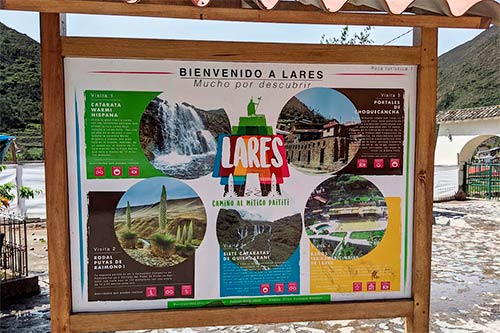
3 The town of Lares
Lares is in the province of Calca north of Cusco. Its main tourist attractions are its thermal baths and the Lares trek to Machu Picchu for 4 days.
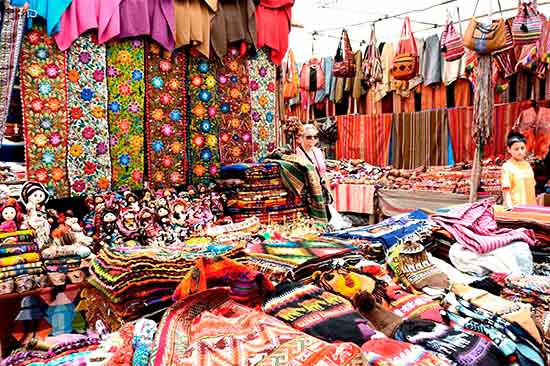
4 Pisac Market
The Pisac market offers jewelry, alpaca clothing, musical instruments, and more handicrafts and groceries. On Sundays the trade is more colorful.
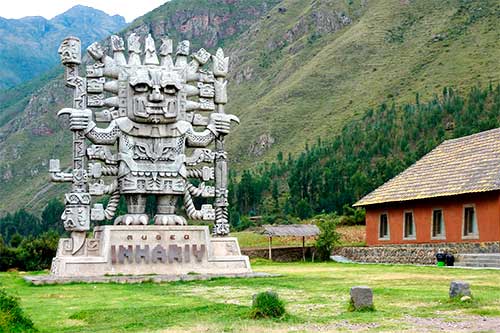
5 Inkariy Museum
The Inkariy museum in the Sacred Valley exhibits panels, photos and sculptures of the cultures of Peru, from Caral to the Incas passing through Moche and Chavín.
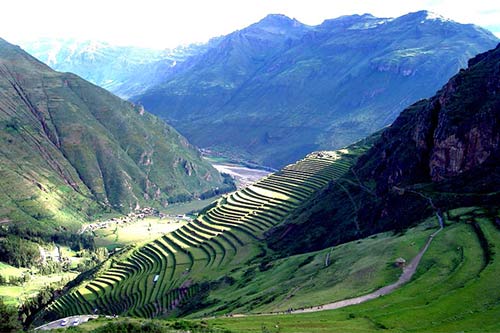
6 Pisac
Pisac is an Inca archaeological site in the Sacred Valley of the Incas. It is only 1 hour from Cusco. The town also offers a famous artisan market.
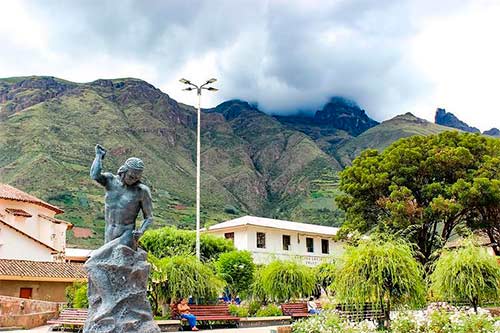
7 Calca town
Calca is one of the most important towns in the Sacred Valley of the Incas. It is famous for its pleasant climate, its thermal baths, Inca sites and much more.
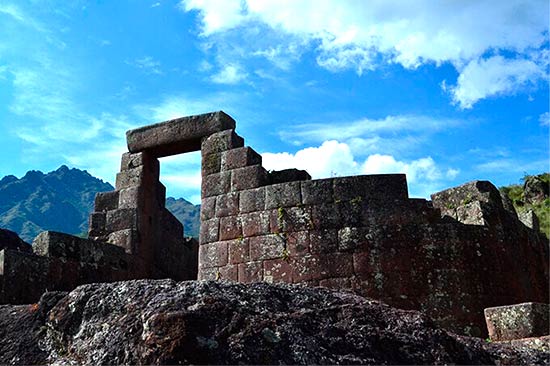
8 Archaeological site of Pisac
The archaeological site of Pisac is located in the Sacred Valley of the Incas. Its name means ‘partridge’ because the place has the shape of this Andean bird.
The province of Calca
Calca is one of the thirteen provinces that make up the department of Cusco. It is made up of the districts of: Coya, Lamay, Lares, Pisac, Lamay, San Salvador, Taray, Yanatile and Calca. The latter is the capital of the province.
Calca is made up of an Andean territory and the high jungle of Cusco. It covers an area of 4,414.49 square kilometers. According to the 2017 census, this territory is inhabited by 63,155 people. The city of Calca, its capital, is located at 2,926 meters above sea level.
The name of the province is related to the pre-Inca people of the ‘kallkas’ who inhabited said territory. With the expansion of the Inca empire, platforms, citadels and temples were built.
Because of its Inca past, the city of Calca is called ‘Capital of the Sacred Valley of the Incas’. It is also known as ‘Ancient Inca City’.
Its population, as in other provinces of Cusco, is mainly dedicated to agriculture. It stands out for the production of potatoes, corn, coffee and more.
The main tourist attractions in Calca are the archaeological site of Pisac. Also through the ancient Inca citadel of Huchuy Qosqo. However, in the territory of the province there are dozens of Inca structures such as: Ancasmarka, Calispuquio and more.
Location
Calca is located north of the city of Cusco, approximately 50 kilometers by road.
The province limits to the north with the province of La Convención, to the east with the province of Paucartambo, to the south with the province of Quispicanchi and with the city of Cusco. Finally to the west with the province of Urubamba.
Geographically, the province of Calca is located in an Andean territory and part of the high jungle of Cusco. It stands out for the presence of the snow-capped Pachatusan, Sahuasiray, Chicón as well as dozens of lagoons.
A part of the province is crossed by the famous Vilcanota River.
The city of Calca, the capital of the province, is located at 2,926 meters above sea level.
Map of the province
Route from Cusco
To visit the districts of the province of Calca you must take one of the public transport minivans from Puputi street. This street is located 1.6 kilometers from the Main Square in the city of Cusco.
The trip from Cusco to the city of Calca, capital of the province, is approximately 51 kilometers. The journey takes 1 hour 30 minutes on average. The cost of the trip in public service is 5 Peruvian soles (approximately 2 US dollars).
History of Calca
Calca has a history that goes back to pre-Inca times. Archaeological finds in the place show the existence of a culture called ‘Kallka’ who were conquered by the Incas in the fifteenth century.
The Incas built important citadels in the area such as Pisac and Huchuy Qosqo. In addition, dozens of platforms and farmland were built where corn was mainly produced.
During the wars between the Spanish and the Incas (from 1537 to 1572) the army of Manco Inca resisted the armies of Hernando Pizarro and Diego de Almagro in Calca. Finally, the territory was conquered, forming the ‘Villa de Zamora’ at the end of the 16th century.
In 1825, after Peru’s declaration of Independence in 1821, the province of Calca was founded under the order of the liberator Simón Bolívar. Today the province is home to some of the best tourist attractions in the so-called Sacred Valley of the Incas.
Main tourist attractions
Archaeological site of Pisac – In the upper part of the town of Pisac is the archaeological site of the same name. In Inca times it was an important citadel with high platforms, temples, paths, stairways, water channels, smaller enclosures, larger enclosures and more. Today it is part of one of the tourist attractions of the Sacred Valley of the Incas 1-day tour. The entrance is included in the famous Tourist Ticket of Cusco.
Huchuy Qosqo Archaeological Site – 8.8 kilometers from the city of Calca is this Inca archaeological site, whose name translated from Quechua means: ‘Little Cusco’. This Inca citadel had platforms, terraces, enclosures of up to three levels, paths, temples and more. Today this site is part of the so-called ‘Huchuy Qosqo trek’, a 3-day hiking route that ends in Machu Picchu.
Lares Hot Springs – These hot springs are located in the district of Lares, 98 kilometers from the city of Calca. Its three pools of cloudy water come from a natural spring with properties such as sodium, magnesium, calcium, potassium and more. The thermal baths are included in the famous hiking route known as the 4-day Lares trek to Machu Picchu. The entrance costs 10 soles for foreigners and 4 soles for Peruvians.
Thermal baths in Calca – Calca, the capital of the province of the same name, offers several swimming pools and thermal baths that are very popular with its inhabitants due to the warm temperate climate of this town. The thermal baths of Machacancha and the thermal baths of Ccatccato (in Lamay) stand out.
Photo gallery
Weather
Calca has a climate that varies according to the town and the altitude of its geography. The city of Calca, its capital, has a warm temperate climate. Its temperature varies from a maximum of 24ºC. up to a minimum of 5ºC. From November to April the rains are more constant. From May to October there is less rainfall but the nights are colder.
More information
Lamay, one of the districts of the province of Calca, is famous for its ‘cuyerías’. In these restaurants the most delicious ‘cuyes al palo’ in the region are prepared. Pisac is famous for its archeological site as well as its Sunday market full of inexpensive handicrafts for tourists.
The towns of the province are famous for their typical costumes, their delicious gastronomy and their traditions. The festivals of the towns are the precise occasion to learn more about these traditions, some with an Inca past. The festivities of the Virgen del Rosario in San Salvador, the Mamacha Asunta festival in Calca and the Virgen de la Natividad festival in Lares stand out.
Tips
During your visit you will also be able to see the famous towns of the province of Urubamba. Very touristic sites such as Chinchero, Moray, Ollantaytambo and even the town of Aguas Calientes (Machupicchu Pueblo) stand out.
During your visit to Calca, do not forget to bring with you: rain poncho, sunscreen, cap or hat, comfortable clothing, mosquito repellent, cash and documents.